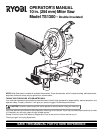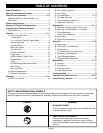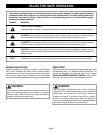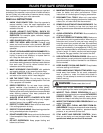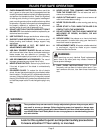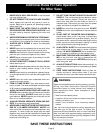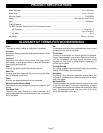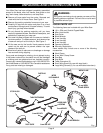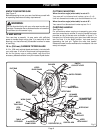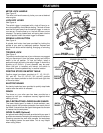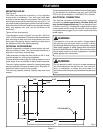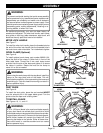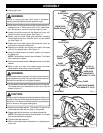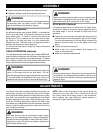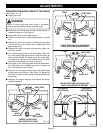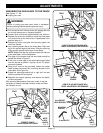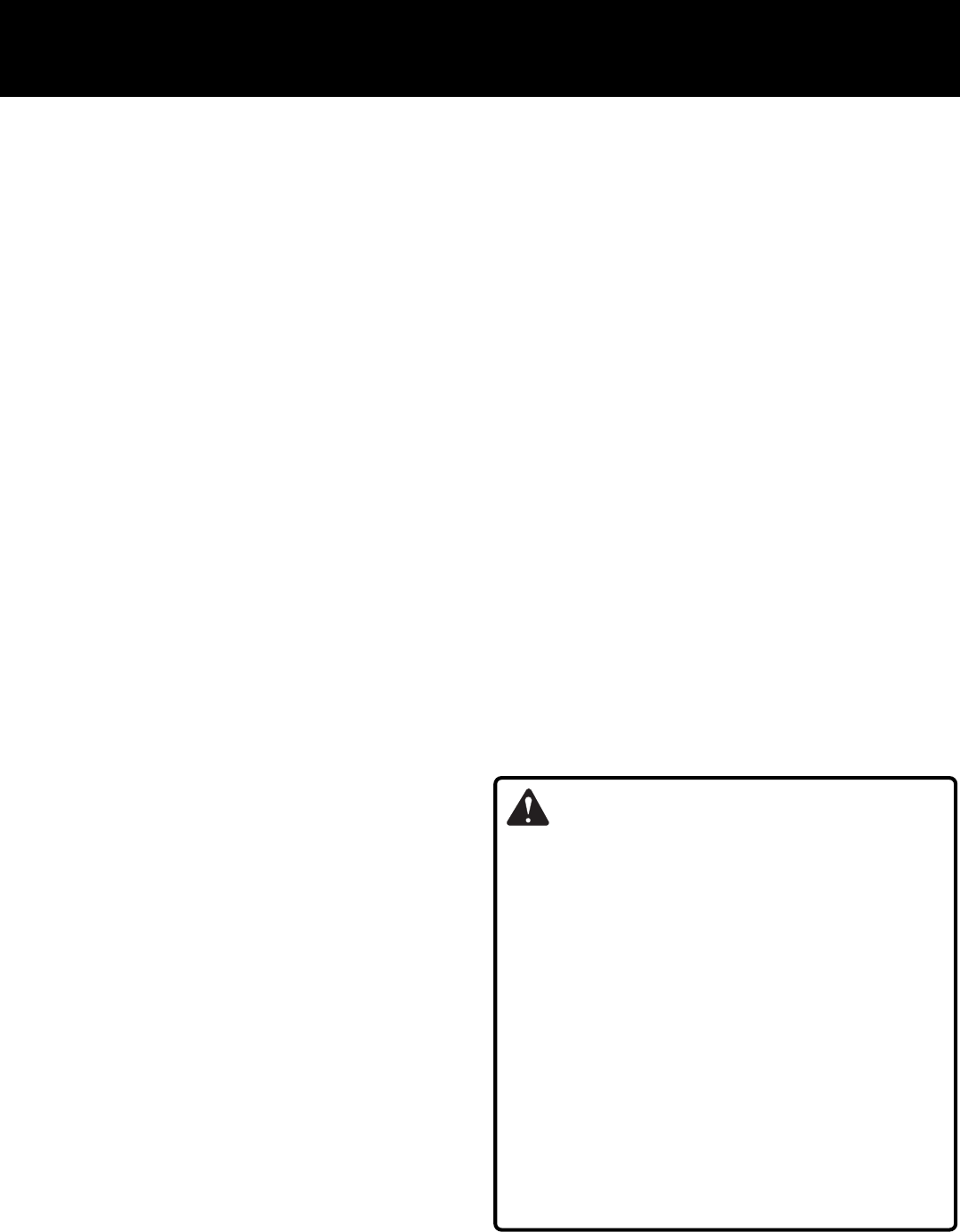
Page 6
1. NEVER USE A DULL SAW BLADE or one that does
not have sufficient set.
2. DO NOT REMOVE THE SAW'S BLADE GUARDS.
Never operate the saw with any guard or cover re-
moved. Make sure all guards are operating properly
before each use.
3. MAKE SURE THE MITER TABLE IS LOCKED IN
POSITION BEFORE OPERATING YOUR SAW. Lock
the miter table by securely tightening the miter lock
handle.
4. NEVER PERFORM ANY OPERATION "FREEHAND".
Always place the workpiece to be cut on the miter table
and position it firmly against the fence as a backstop.
5. ALWAYS USE A CLAMP to secure the workpiece
when possible.
6. NEVER hand hold a workpiece that is too small to be
clamped. Keep hands clear of the no hands zone.
7. NEVER reach behind or under the blade and its cutting
path with your hands and fingers for any reason.
8. NEVER stand or have any part of your body in line with
the path of the saw blade.
9. ALLOW THE MOTOR TO COME UP TO FULL SPEED
before starting a cut.
10. ALWAYS release the power switch and allow the saw
blade to stop rotating before raising it out of the
workpiece.
11. NEVER reach to pick up a workpiece, a piece of scrap,
or anything else that is in or near the cutting path of the
blade.
12. NEVER leave the miter saw unattended while con-
nected to a power source.
13. FIRMLY CLAMP OR BOLT your miter saw to a work-
bench or table. The most comfortable saw table height
is 39 inches or at approximately hip height.
14. AVOID AWKWARD OPERATIONS AND HAND PO-
SITIONS where a sudden slip could cause your hand to
move into the blade. ALWAYS make sure you have
good balance. NEVER operate your miter saw on the
floor or in a crouched position.
15. ALWAYS PROVIDE ADEQUATE ROOM AND SUP-
PORT for crosscutting long workpieces.
16. NEVER USE A LENGTH STOP ON THE FREE SCRAP
END OF A CLAMPED WORKPIECE. NEVER hold
onto or bind the free scrap end of the workpiece in any
operation. If a work clamp and length stop are used
together, they must both be installed on the same side
of the saw table to prevent the saw from catching the
loose end and kicking up.
Additional Rules For Safe Operation
For Miter Saws
17. DO NOT TURN THE MOTOR SWITCH ON AND OFF
RAPIDLY. This could cause the saw blade to loosen
and could create a hazard. Should this ever occur,
stand clear and allow the saw blade to come to a
complete stop. Disconnect your saw from the power
supply and securely retighten the blade bolt.
18. NEVER cut more than one piece at a time. DO NOT
STACK more than one workpiece on the saw table at
a time.
19. IF ANY PART OF THIS MITER SAW IS MISSING or
should break, bend, or fail in any way, or should any
electrical component fail to perform properly, shut off
the power switch, remove the miter saw plug from the
power source and have damaged, missing, or failed
parts replaced before resuming operation.
20. ALWAYS STAY ALERT! Do not allow familiarity (gained
from frequent use of your saw) to cause a careless
mistake. ALWAYS REMEMBER that a careless frac-
tion of a second is sufficient to inflict severe injury.
21. MAKE SURE THE WORK AREA HAS AMPLE LIGHT-
ING to see the work and that no obstructions will
interfere with safe operation BEFORE performing any
work using your saw.
22. ALWAYS TURN OFF SAW before disconnecting it, to
avoid accidental starting when reconnecting to power
supply.
23. SAVE THESE INSTRUCTIONS. Refer to them fre-
quently and use to instruct other users. If you loan
someone this tool, loan them these instructions also.
SAVE THESE INSTRUCTIONS
WARNING:
Some dust created by power sanding, sawing, grinding,
drilling, and other construction activities contains
chemicals known to cause cancer, birth defects or
other reproductive harm. Some examples of these
chemicals are:
• lead from lead-based paints,
• crystalline silica from bricks and cement and other
masonry products, and
• arsenic and chromium from chemically-treated
lumber.
Your risk from these exposures varies, depending on
how often you do this type of work. To reduce your
exposure to these chemicals: work in a well ventilated
area, and work with approved safety equipment, such
as those dust masks that are specially designed to filter
out microscopic particles.



